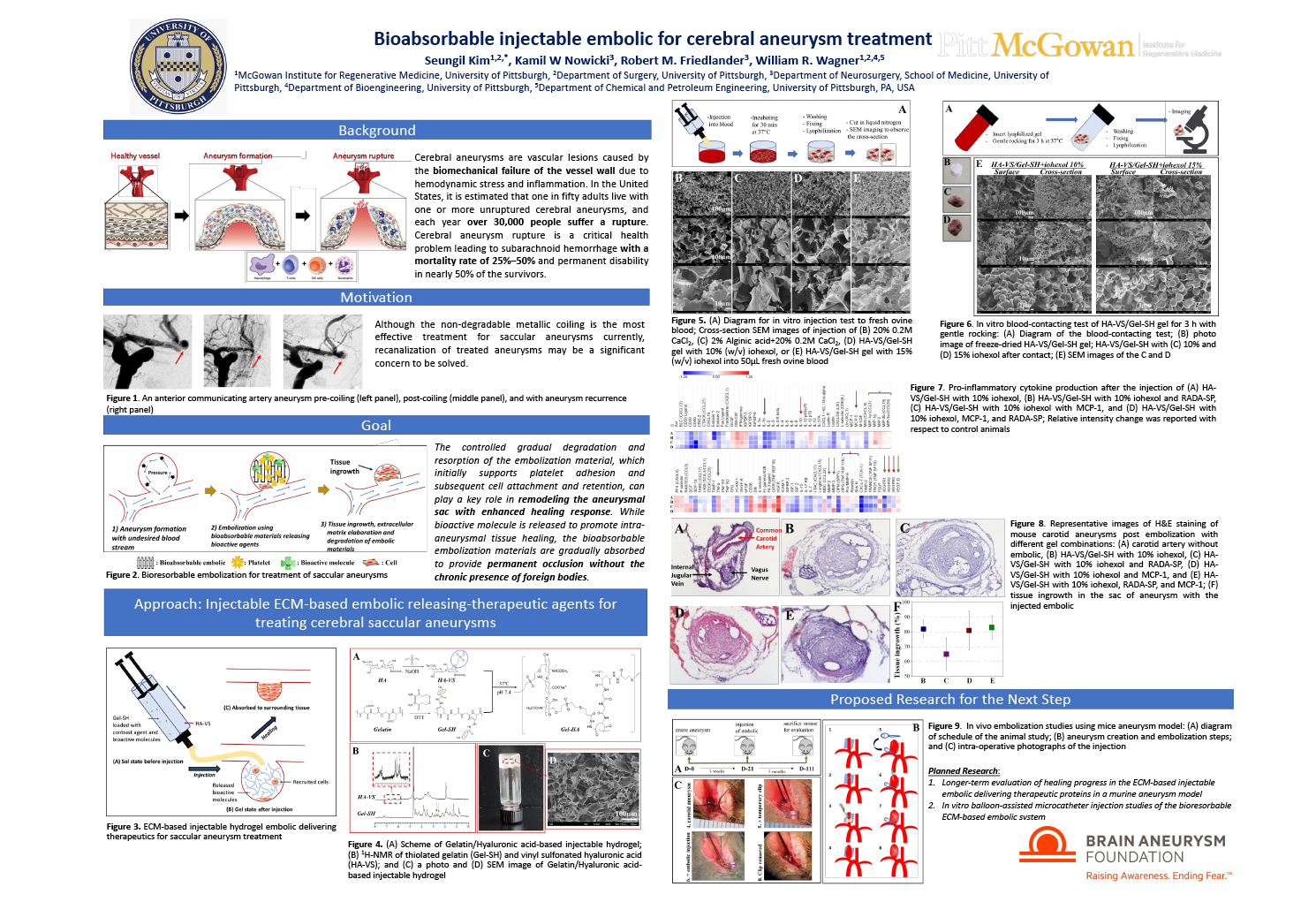Meet Research Grant Recipient: Seungil Kim, PhD

Dr. Seungil Kim is the recipient of the Katelyn M. Caruso and Gary Chudnovsky Chair of Research for $50,000.
BAF: Please tell us your background, where you are from, schooling, etc.
SK: I hail from South Korea and hold a Ph.D. degree in Biomedical Engineering from the University of Manitoba in Canada. With over 15 years of specialized knowledge and hands-on experience in polymer and biomedical engineering, I have developed strong expertise in this field. Presently, I serve as a Research Assistant Professor at the University of Pittsburgh, where my research revolves around the development and application of bioabsorbable embolic techniques for the treatment of cerebral aneurysms.
BAF: What led you to become involved with brain aneurysm research?
SK: I am currently at the forefront of leading and developing projects at the University of Pittsburgh, with a primary focus on advancing bioabsorbable embolization systems. In my role as a polymer/biomedical engineer, I am dedicated to designing and creating novel materials and devices aimed at enhancing the treatment of aneurysms. This is deeply personal for me as my father passed away due to a stroke, motivating me to strive towards helping patients at risk of aneurysm rupture.
BAF: In the simplest terms, what is the purpose of your project?
SK:The primary objective of the project is to develop a bioabsorbable and injectable embolization material based on an extracellular matrix specifically designed for saccular aneurysms. Our hypothesis centers around the controlled and gradual degradation of the injectable embolic, which initially facilitates platelet adhesion, cell attachment, and retention. We believe that this controlled degradation process can significantly contribute to remodeling the aneurysmal sac, promoting a more robust healing response. The material will release MCP-1 and RADA-SP to achieve this, fostering an inflammatory intra-aneurysmal tissue healing and intra-aneurysmal tissue in-growth. As the bioabsorbable injectable embolic materials gradually dissolve, they will facilitate permanent occlusion, eliminating the need for long-term foreign body presence.
BAF: In the simplest terms, what do you hope will change through your research findings?
SK: The ultimate goal of my research is to offer a lasting treatment option for brain aneurysms and decrease the risk of stroke.
BAF: Why is the funding you are receiving through the Brain Aneurysm Foundation so important?
SK: Through the generous grant from the Brain Aneurysm Foundation, we aim to gain a deeper understanding of the biological response and healing process concerning our bioabsorbable injectable embolic system. This system will be the first of its kind for intracranial aneurysms, fully bioabsorbable, and capable of controlled release of MCP-1 and RADA-SP to promote healing. Our study’s anticipated results will pave the way for the development of a translational bioabsorbable injectable embolic delivering therapeutics.
Pictured above is Dr. Kim’s research poster, “Evaluation of Healing Progress in the ECM-Based Injectable Embolic Delivering Therapeutic Proteins in a Murine Cerebral Saccular Aneurysm Model”


 Brain Aneurysm Foundation
Brain Aneurysm Foundation 